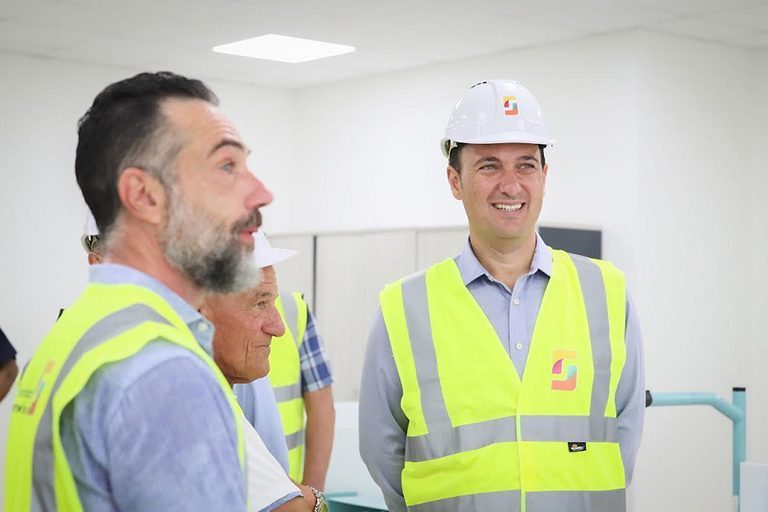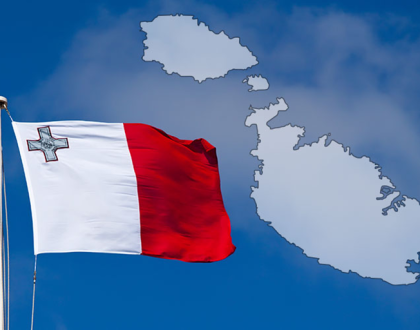Malta’s First Carbon Neutral Public School

In a groundbreaking initiative for Malta's educational infrastructure, the new Msida Primary School is set to open its doors as the country’s first carbon-neutral public school. This ambitious project, spearheaded by the Ministry for Education, aims to set a new standard in environmental sustainability, serving as a model for future educational facilities across the country. The new school is a flagship example of how Malta is aligning itself with global environmental goals, with the help of EU funding.
A Milestone in Green Education: Carbon-Neutral Design and Energy Efficiency
The construction of Msida Primary represents a bold step forward in Malta’s commitment to environmental sustainability. With a total investment of €24 million, co-financed through the NextGenerationEU Programmes as part of the Recovery and Resilience Plan for Malta, the project is setting a new benchmark for public school facilities. The school is expected to receive its first cohort of students and educators by the end of the month.
One of the most significant achievements of this new school is its status as the first carbon-neutral public educational facility in Malta. The school is designed to achieve the highest possible energy classification, A+, with an Energy Performance Certificate (EPC) rating of -9. This ensures that the energy consumption of the building will be as low as possible, marking a significant shift towards sustainability in educational infrastructure.
Energy Performance and Environmental Measures
Minister for Education Clifton Grima, who visited the school ahead of its opening, expressed pride in the project's environmental credentials. “The construction of the new primary school in Msida within the Santa Tereza College is proof of the Ministry and the Foundation for Tomorrow’s Schools (FTS) commitment to modern infrastructure that respects sustainable development. This building goes beyond statutory requirements as established by the EU Directive on the Energy Performance of Buildings,” Grima said.
To ensure energy efficiency, the design of Msida Primary was based on best practices in sustainability. The Foundation for Tomorrow’s Schools, in collaboration with the University of Malta, conducted technical studies on the architectural concept. These studies identified optimal and cost-effective measures to reduce the building’s energy consumption, nearly achieving the status of a “near-zero” energy building. This collaboration exemplifies a forward-thinking approach to infrastructure that combines educational needs with a commitment to environmental stewardship.
Innovative Features of Msida Primary: A Model for Future Schools
The Msida Primary School boasts a variety of innovative features designed to minimize its environmental impact while providing a state-of-the-art learning environment. One of the most important environmental measures taken was the installation of insulation in both walls and ceilings. This insulation is designed to maintain a stable indoor temperature, keeping the building cool in summer and warm in winter, thereby reducing the need for energy-intensive heating or cooling systems.
Additionally, the school has incorporated a rainwater recycling system. Rainwater is collected and stored in specialized wells, where it is then repurposed for use in sanitary facilities and irrigation. This water-saving initiative not only reduces the school's overall water consumption but also serves as a practical example of how everyday activities can contribute to environmental sustainability.
In terms of size and facilities, the Msida Primary School includes approximately 40 classrooms, a childcare centre, a public library, and a hall with a capacity of 300 people. The public library and the hall, along with several recreational areas, will be accessible to the local community after school hours. This integration of school and community space demonstrates the Ministry's commitment to creating multi-functional facilities that serve the wider public as well as students and educators.
Educational Infrastructure of the Future
Minister Grima emphasized that this new school is designed to meet both the current and future needs of Malta's educational system. “We believe that the second home of students and educators should not only serve its function but also provide an environment where children enjoy learning and educators enjoy teaching,” Grima said. This philosophy underscores the Ministry’s vision for the future of education in Malta, where schools are not just places of learning but spaces that foster creativity, collaboration, and well-being.
The school’s focus on sustainability extends beyond its energy-efficient design. The building was constructed using environmentally friendly materials and methods that adhere to international best practices. This includes the use of recycled materials and a construction process that minimized waste and reduced the project’s carbon footprint.
A New Era of Educational Facilities in Malta
In addition to the school itself, the Msida Primary complex includes a new facility for the Msida Sea Scouts and a two-level parking garage with space for around 180 vehicles. The provision of parking, while a practical necessity, was designed with environmental considerations in mind. By placing the parking area below the school, the architects ensured that it would not detract from the green space surrounding the building.
The Msida Primary School is not just a milestone for Malta in terms of environmental sustainability; it is a model for future educational facilities both locally and internationally. By integrating cutting-edge environmental technologies and creating spaces that serve both educational and community functions, the school represents a holistic approach to infrastructure development.
As the first carbon-neutral public school in Malta, Msida Primary is a clear indication that the country is serious about aligning its educational policies with its broader environmental commitments. The collaboration between the Ministry for Education, the Foundation for Tomorrow’s Schools, and the University of Malta demonstrates the power of cross-sector partnerships in driving innovation and sustainability.
Conclusion
As Malta continues to move towards a greener future, projects like the Msida Primary School are vital in setting the standard for sustainable development. With its carbon-neutral design, energy-efficient systems, and community-focused facilities, Msida Primary is not only a school but a blueprint for the future of education in Malta. By investing in sustainable infrastructure, Malta is ensuring that future generations of students and educators will have the tools they need to succeed in an environmentally responsible manner.
FAQs
What makes Msida Primary School environmentally friendly?
Msida Primary is Malta’s first carbon-neutral public school, with energy-efficient systems, rainwater recycling, and insulation to reduce energy use.
How is Msida Primary School classified in terms of energy performance?
The school has achieved an A+ energy classification with an Energy Performance Certificate (EPC) rating of -9, making it highly energy-efficient.
What was the total cost of constructing the Msida Primary School?
The project cost €24 million, co-financed by the NextGenerationEU Programmes through Malta’s Recovery and Resilience Plan.
What environmental measures were implemented in the construction of the school?
Key measures include insulation for temperature control, rainwater recycling, and the use of environmentally friendly building materials.
How many classrooms does the new Msida Primary School have?
Msida Primary School features approximately 40 classrooms, along with other facilities such as a public library and a childcare centre.
What additional facilities are available at the Msida Primary School?
The school includes a hall for 300 people, a public library, a childcare centre, and recreational spaces accessible to the local community after school hours.
Is the Msida Primary School accessible to the local community?
Yes, the public library, hall, and recreational areas are open for community use after school hours.
How was the design of the Msida Primary School developed?
The design was developed through collaboration between the Foundation for Tomorrow’s Schools and the University of Malta, focusing on energy efficiency and sustainability.
What role did the University of Malta play in the construction of the school?
The University of Malta conducted technical studies to identify cost-effective and energy-efficient design measures for the school.
What is the significance of the Msida Primary School for Malta’s educational system?
Msida Primary sets a new standard for sustainable educational facilities in Malta, serving as a model for future schools across the country.
Recommended Posts

MUT’s Stand on World Teachers’ Day
October 5, 2024

Legal Win for Malta’s Citizenship Program
October 4, 2024

Why iGaming Brands Choose Malta
October 4, 2024



